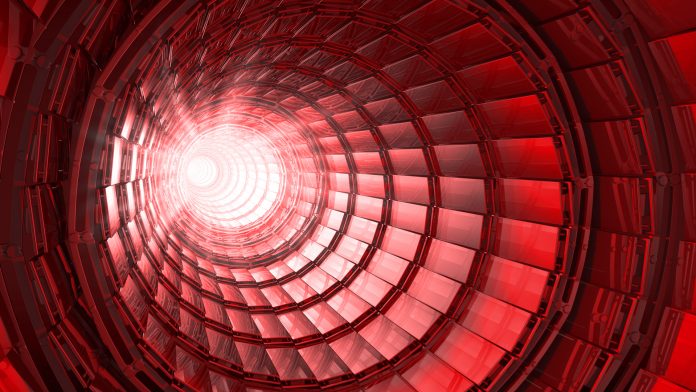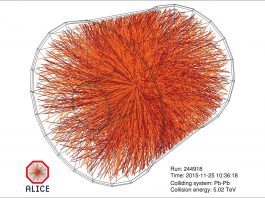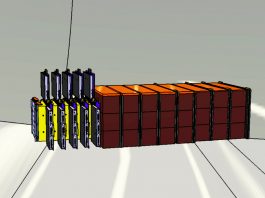Professor Tor Raubenheimer from the SLAC National Accelerator Laboratory outlines how particle accelerator technology has evolved and looks at what the future might hold.
The Linac Coherent Light Source (LCLS) complex will be one of the brightest sources of X-rays in the world with the addition of the LCLS-II High Energy (LCLS-II-HE). It will produce both extremely high peak X-ray power and a very high repetition rate. These X-ray pulses are used to make movies of atomic motion, watch chemical reactions unfold, probe the properties of materials, and explore fundamental processes in living things; the unique capabilities of the LCLS are expected to yield a host of discoveries to advance technology, medicine, and energy solutions, potentially improving our quality of life. My work is focussed on addressing the particle accelerator physics and the conceptual design of the LCLS-II and LCLS-II-HE.
The LCLS-II-HE facilities are the culmination of 40 years of particle accelerator R&D. In 1984, Professor Claudio Pellegrini and collaborators described the path to an X-ray Free Electron Laser. The Free Electron Laser (FEL) was invented in the 1970s by Professor John Madey of Stanford but was limited in wavelength by available mirrors; the demonstration by Madey was done at infrared wavelengths. Pellegrini and collaborators showed that one could bypass the mirrors and develop a single pass FEL. This principal allows the FEL concept to extend into X-ray wavelengths, provided the electron beam was of sufficient quality.
The challenge of beam control & quality
About the same time, in 1982, Professor Burton Richter of Stanford University proposed the Stanford Linear Collider (SLC) to study the Z0 boson. The SLC was an innovative concept as the world’s first linear collider. Most particle colliders have been based on storage rings where the particles are circulated in a large circumference ring in opposite directions, colliding at specified locations where large detectors were placed. Examples of such colliding-beam accelerators include the Large Hadron Collider in Geneva (27km in circumference) and the Relativistic Heavy Ion Collider on Long Island (4km in circumference). The Linear Collider is an approach that allows increasing collision energy of an electron/position collider without a large increase in the facility size.
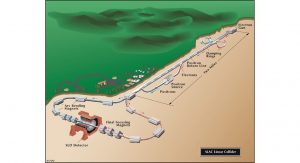
The challenge of the Linear Collider is that it required unprecedented quality of the electron beams. The rate of interesting interactions during the beam collision is inversely proportional to the beam cross-sectional area. To achieve an interesting collision rate at the SLC, the electron and positron beams were focused down to less than one micron (a human hair is about 25 microns in diameter). When trucks or buses would drive by on the nearest road, roughly one km away, vibrations from their passage would cause the beams to miss each other.
Achieving and controlling such tiny beams was a major challenge. New diagnostics were needed to resolve these beams and new concepts for control and feedback systems were needed to maintain and stabilise the beams. Pioneering concepts were developed by Drs Nan Phinney and Marc Ross and Professors Tom Himel and Robert Siemann, amongst others. Single pass Beam Position Monitors were developed with sub-micron resolution, and beam size diagnostics were developed to measure beams as small of 0.5 microns. Adaptive feedback systems were implemented to control the beam energy, position, and beam sizes. My own work was focused on using the diagnostics and controls to understand the ‘wakefields’, electromagnetic fields induced by the beam-environment interaction that act back on the beam, and other deleterious beam physics effects causing the beam to become unstable and making the beam size grow.
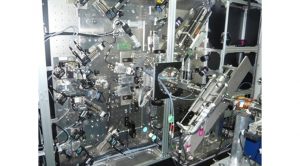
The SLC operated through the late 1980s and the 1990s, achieving results that were comparable to those from the 27km LEP collider at CERN. More importantly, the understanding of beam physics and the novel techniques that were developed to create and control these microscopic beams were critical in enabling the next generation of linear accelerators. Specifically, the high-quality beams that were crucial to the success of the SLC were also very similar to those needed for an X-ray Free Electron Laser.
The LCLS was created using pieces of the SLC to generate and accelerate the necessary very high-quality beams. Beyond the high-quality beams, two other innovations were required: radio-frequency (RF) guns that could generate high quality beams at low energy, and magnetic undulators that could be constructed with high precision over distances of 100m. These were developed through the 1990s with pioneering work first at Los Alamos National Laboratory and then a BNL-SLAC-UCLA collaboration on the RF gun and Lawrence Berkeley National Laboratory and Argonne National Laboratory on the undulators. All of these systems were put together and the world’s first X-ray Free Electron Laser started operation in 2009 (Emma et al., Nat. Photon. 4, 641–64 (2010); Bostedt et al, Rev. Mod. Phys. 88, 015007 (2016)).
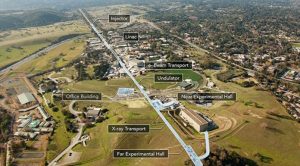
In parallel with the development of the X-ray FEL, the SLC launched an international R&D programme on technology in the late 1980s to enable the next-generation linear collider (NLC). The goal was to achieve at least 500 GeV in the centre-of-mass (five times higher than the SLC) with beam sizes in collision of about five nanometres (100 times smaller than in the SLC). Such a goal required further developments in diagnostics and beam control as well as the acceleration systems. This became a global effort. New types of Beam Position Monitors were developed that could resolve a particle bunch position at the level of a few nanometres, beam size diagnostics were developed using lasers that could measure sizes at a similar scale, and digital feedback and feedforward systems were developed with GHz bandwidth to control the bunches.
As part of the NLC programme, innovative normal conducting RF technologies at X-band rf frequency were developed at SLAC and then adopted in the late-2000s at the CERN laboratory in Switzerland. The main benefit of the X-band rf wavelength is the ability to support gradients of roughly 100 MV/m, four or five times higher than those used for the SLAC linac. These technologies form the basis of new ideas for diagnostics and beam control as well as compact industrial, medical, and scientific accelerators (e.g. Maxim et al, Radiother. Oncol., 139:28-33 (2019); Sun et al, Phys. Rev. ST Accel. Beams 15, 030703 (2012)) some of which are being developed by the European CompactLight Collaboration.
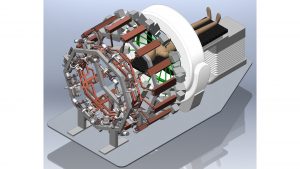
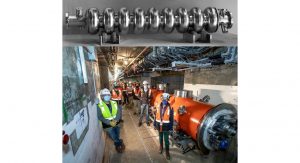
The challenge of beam power
In addition to beam quality, many experiments and applications require high beam power. The superconducting RF program (SRF), pioneered by the TESLA Technology Collaboration and led by the DESY laboratory in Germany, was another major innovation. Typical normal conducting linear accelerators such as the original SLAC linac operate in a pulsed mode (the SLAC linac has a duty cycle of about 0.01%). Superconducting RF changes that and can operate in a continuous (CW) mode, potentially increasing the beam availability by 10,000 times. The SRF technology was used for the first FEL at Stanford in the 1970s but it was costly and limited in acceleration gradient. After working at SLAC on SRF in the 1970s, Professor Bjorn Wiik became director of DESY in the early 1990s and set a goal of improving the SRF gradient by a factor of five and reducing the cost by a similar factor. This programme made enormous progress through the 1990s and 2000s and was adopted as the basis for the International Linear Collider (ILC) project in 2004.
The ILC is a massive science project on the scale of ITER and is still waiting for approval from the collaborating countries. However, the SRF technology that was developed for the ILC has been used to enable multiple accelerators including the Spallation Neutron Source in Oak Ridge Tennessee, the European X-ray FEL (EuXFEL) in Hamburg, Germany, the Facility for Rare Ion Beams in Lansing and other smaller scale research infrastructures.
The EuXFEL was commissioned in 2018 and is now operating close to the design specifications. The EuXFEL operates in a pulsed mode, much like the ILC was planned to operate, with a duty cycle of about 1%, 100 times more than the SLC but still not close to CW.
In 2011, R&D innovation from Fermilab hinted at a significant improvement in the performance of the SRF cavities by increasing the Q of the cavities and reducing RF heating. This makes it much more reasonable to operate these SRF cavities in a CW mode and at high acceleration gradients.In 2013, SLAC proposed the LCLS-II as a CW X-ray FEL that would cover the soft to tender X-ray regime (0.2 to five keV) and the project focused on commercialising the high-Q innovation along with many new techniques of generating and preserving the beam quality in a bunch train with bunches spaced by one μs. The LCLS-II is being constructed and will turn on in 2022 with a 4 GeV electron beam operating with 120 kW of electron beam power, about 1000 times higher than what the LCLS typically operates.
The LCLS-II High Energy (LCLS-II-HE) is the next step in the progression of these advanced X-ray FELs and is followed closely, conceptually and timewise, by the Chinese SHINE project. The LCLS-II-HE will use additional innovation in the SRF technology to increase the gradient from 16 MV/m to 21 MV/m and will double the electron beam energy from four to eight GeV, increasing the X-ray spectral range from five keV to 20 keV. New RF gun technologies are being developed to further increase the electron beam brightness. Extensive diagnostics and controls are being implemented and innovative Machine Learning algorithms are being embedded in the control system to optimise the performance of the accelerator.
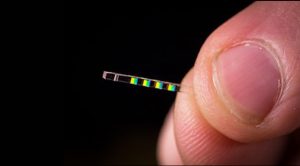
Applications
The SRF acceleration systems enable the production of high-power particle beams. The beam control techniques allow for high precision control and the production of micro beams. Both are critical in advancing the science applications. Development of micro beams also allows for miniaturising the particle accelerator systems. Most accelerators use microwaves to accelerate charged particles but it is also possible to consider using lasers where the wavelengths and thus the accelerator structure dimensions are decreased by 10,000. The ACHIP collaboration is aiming to do this by producing accelerators using lithographical techniques on silicon wafers like computer chips. While such accelerators would not be designed to produce high current beams, the compactness could enable a whole new suite of applications!
Most of these technological innovations are directly applicable to industry, medicine, and security. Accelerators are estimated to enable roughly €400bn of industrial products, ranging from electronics to shrink wrap. The European ARIES programme is a collaboration focused on transferring these new particle accelerator concepts to industry and therefore benefit wider society. Other potential applications include accelerator driven nuclear reactors which are intrinsically safe and the transmutation of nuclear waste (IAEA-TECDOC-1766 (2015), Abderrahim et al, Nucl. Instr. Meth., A463, 487 (2001)).
In summary, many innovations have been made in particle accelerator technology over the last 40 years with enormous increases in beam power and beam quality to support scientific discovery, ranging from particle physics to understanding catalysts and virus imaging (such as SARS-CoV-2). These particle accelerator innovations are starting to move from the science laboratories to societal and industrial applications where I also expect significant impact.
Please note, this article will also appear in the sixth edition of our quarterly publication.

